 |
 |
 |
| |
A prospective, blinded multicenter US evaluation of a multi-analysis blood-based test for the detection of hepatocellular carcinoma (HCC) in patients with cirrhosis.
New Simple Blood Test More Sensitive Than Ultrasound for Early HCC
|
| |
| |
EASL Congress 2024, June 5-8, 2004, Milan
Mark Mascolini
HelioLiver Dx, which starts with a standard blood draw in the office, proved more sensitive than ultrasound in detecting early hepatocellular carcinoma (HCC) in a high-risk population [1]. In the CLiMB trial HelioLiver Dx met two primary endpoints for greater sensitivity than ultrasound and noninferiority criteria for specificity.
Researchers at the University of California, Irvine, and other centers noted that people at high risk for HCC, like those with cirrhosis, can go undiagnosed because ultrasound has weaknesses in detecting this cancer: (1) People with cirrhosis often do not follow testing instructions (poor adherence rate 9%), (2) ultrasound has low sensitivity for small HCC lesions, and (3) ultrasound performance can be affected by the individual operator, the equipment used, and lesion size.
The HelioLiver Dx approach relies on a routine blood draw into special tubes provided to the phlebotomist. An immunoassay evaluates serum for protein tumor markers of HCC (alpha-fetoprotein [AFP], AFP-1.3%, DCP), and a cfDNA methylation assay evaluates plasma to measure methylation profiles of target genes differentially methylated by HCC. The analysis also factors in demographics, including patient age and gender. The provider receives a report of a positive or negative result.
CLiMB, a prospective multicenter blinded trial enrolled 21- to 84-year-olds with a high risk of HCC and randomized them to HelioLiver, ultrasound, or alpha-fetoprotein measurement [2]. The aim of the study was a direct comparison of performance characteristics of HelioLiver Dx and ultrasound. All participants also received multiphase MRI with contrast. Follow-up visits came at 6, 12, and 18 months.
The trial enrolled 1968 people, 412 of whom entered the study before June 20, 2020 and made up the training cohort. Researchers assigned the remaining 1556 participants to the validation cohort, of whom 1285 could be evaluated at the initial visit.
Participants had to have a high risk of HCC by clinical diagnosis of blood analytes, ultrasound and elastography, diagnostic imaging by CT or MRI, or liver biopsy [2]. Clinicians detected 46 liver tumors in these people for a prevalence of 3.6%. Most people diagnosed with HCC had a single lesion (65.2%) with lesion size varying from 1 cm or less (8.7%), 1 to 2 cm (37.0%), 2 to 3 cm (28.3%), 3 to 4 cm (6.5%) and 4 cm (20.0%). Most lesions were early (T1) stage.
Compared with 1222 people without HCC lesions, those with HCC were older (average age 64.6 vs 59.4), had a higher proportion of men (65.2% vs 34.8% women), and a high proportion of Hispanics (43.5% of those with HCC vs 33.1% of those without HCC).
HelioLiver Dx met the primary endpoint of at least 5% greater sensitivity than ultrasound in detecting HCC (sensitivity difference 20%, 95% confidence interval [CI] 5.8% to 35.6%). The new test also had greater sensitivity than ultrasound for lesions 4 cm or smaller (difference 24.0%, 95% CI 5.4% to 43.2%) and lesions 2 cm or smaller (difference 28.7%, 95% CI 9.5% to 47.6%). HelioLiver Dx proved noninferior to ultrasound in specificity (-6.4%, 95% CI -8.6% to 4.2%) and had greater sensitivity and specificity than combined ultrasound and AFP. Positive predictive value was similar with HelioLiver Dx alone (12.6%) and ultrasound alone (15.3%).
HelioLiver Dx proved more sensitive than ultrasound or AFP for early T1 lesions but not for T2 to T4 or unstaged lesions, in which the tests has similar sensitivity. The new test was also more sensitive than ultrasound in detecting 2-cm or smaller lesions (ultrasound spotted no lesions that small) and in detecting 2- to 3-cm lesions.
HelioLiver Dx did not differ significantly from ultrasound in sensitivity among people with cirrhosis due to MAFLD, alcoholic-liver disease, viral disease, or other causes or in Hispanics. But the new test had significantly lower specificity than ultrasound in Hispanics and in people with cirrhosis caused by MAFLD, alcoholic liver disease, a virus, or other causes.
CLiMB trial investigators proposed that an accurate, simple blood test like HelioLiver Dx "may help improve patient outcomes through improved adherence and superior early detection of HCC."
References
1. Taggart D, Mahajan S, Gallant M, et al. A prospective, blinded multicenter US evaluation of a multi-analysis blood-based test for the detection of hepatocellular carcinoma (HCC) in patients with cirrhosis. EASL Congress 2024, June 5-8, 2004, Milan. Abstract LBO-006.
2. ClinicalTrials.gov. Clinical Trial Multi-analyte Blood Test (CLiMB). ClinicalTrials.gov ID NCT03694600. https://clinicaltrials.gov/study/NCT03694600
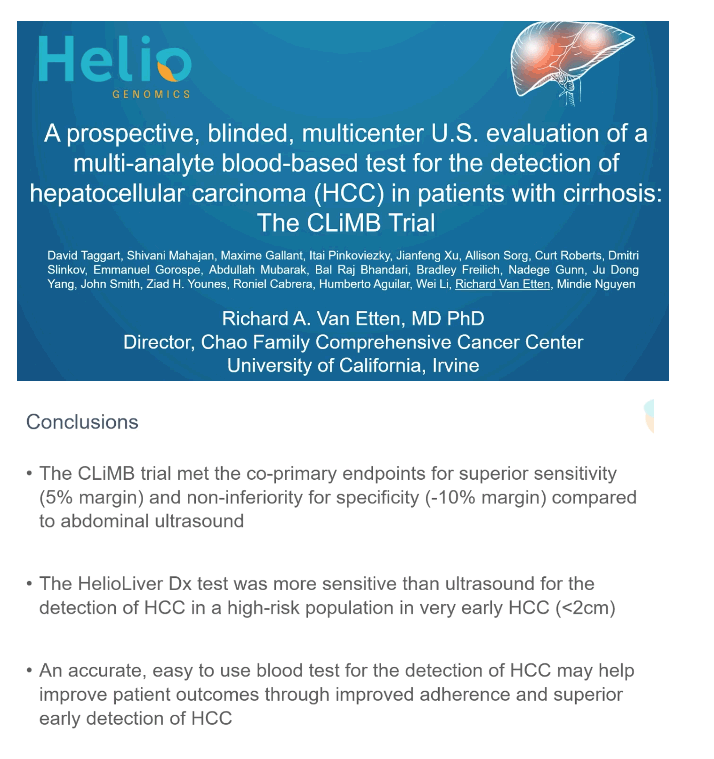
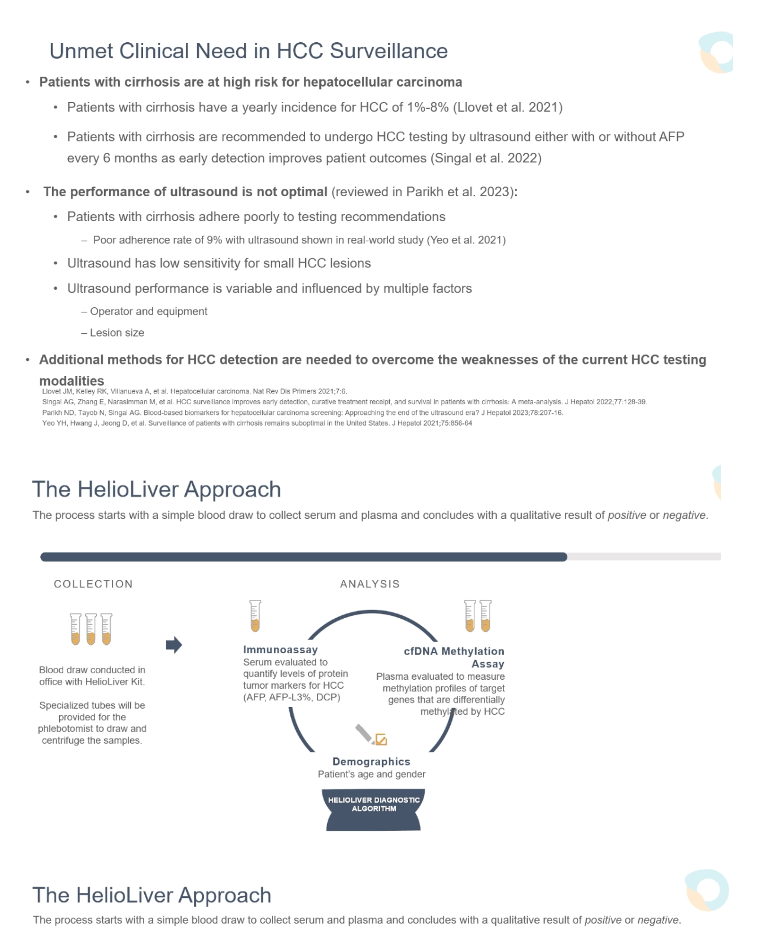
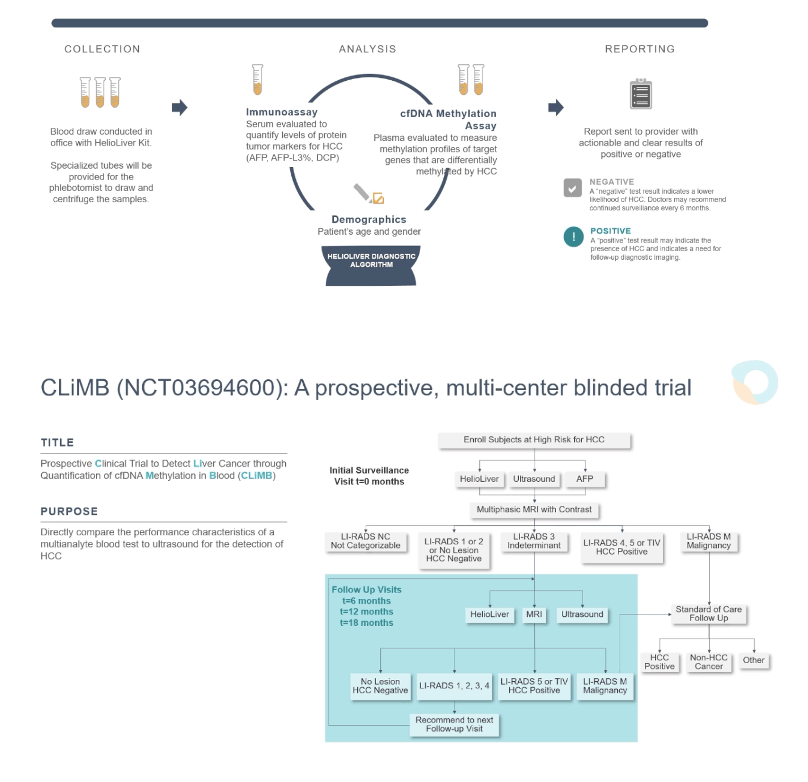
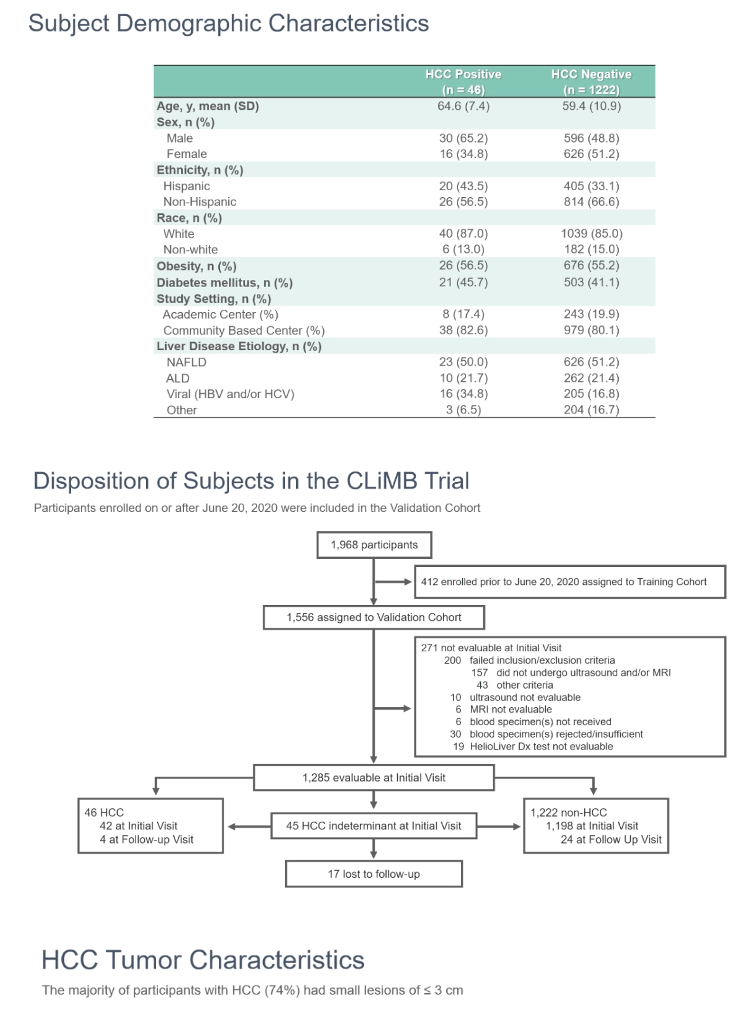
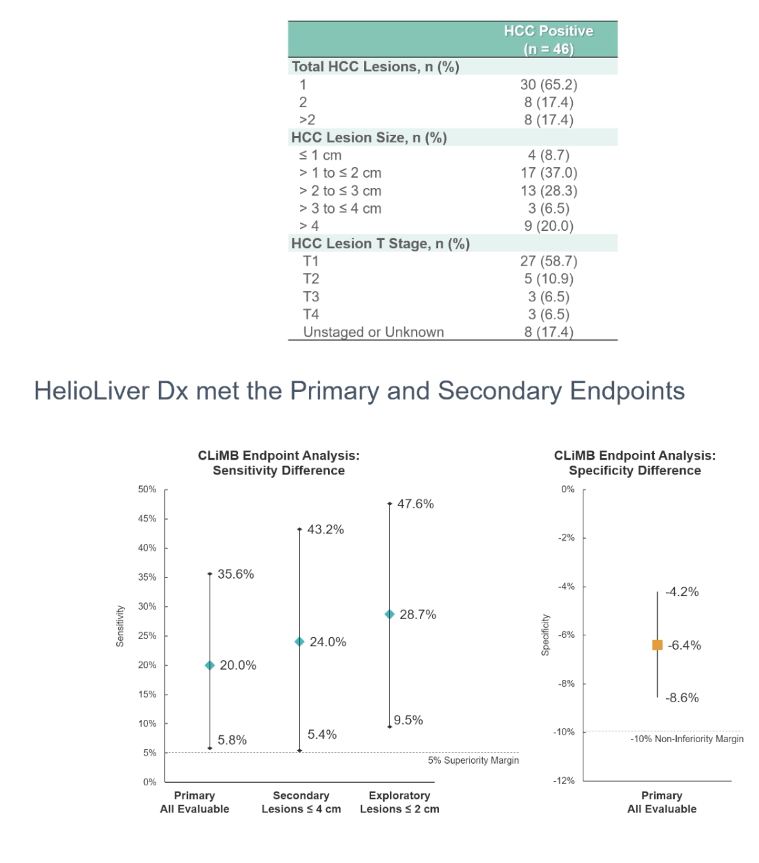
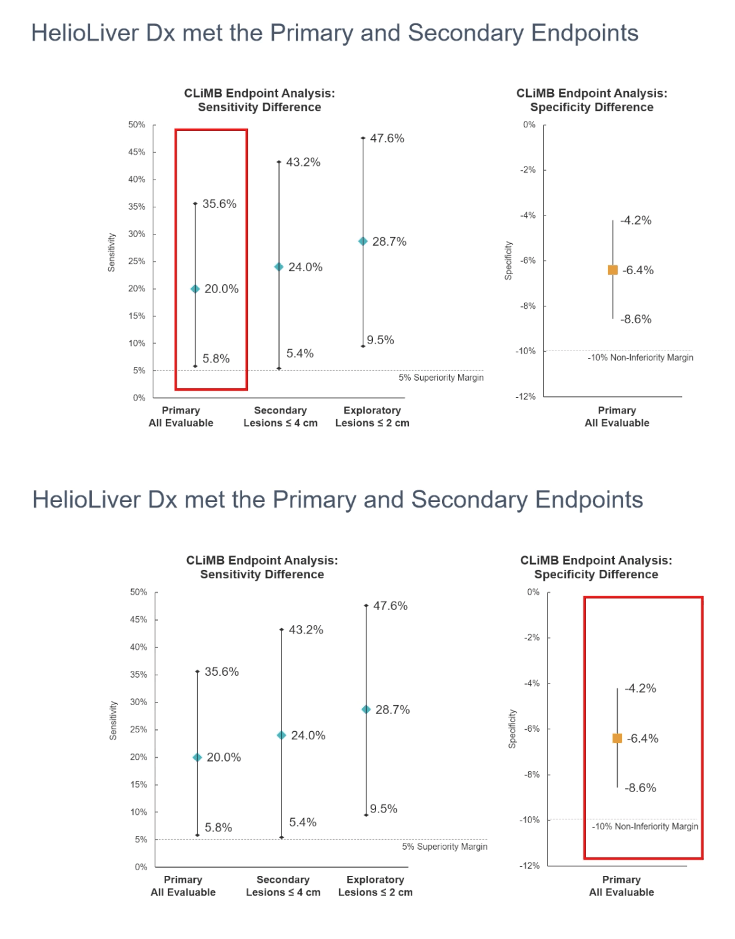
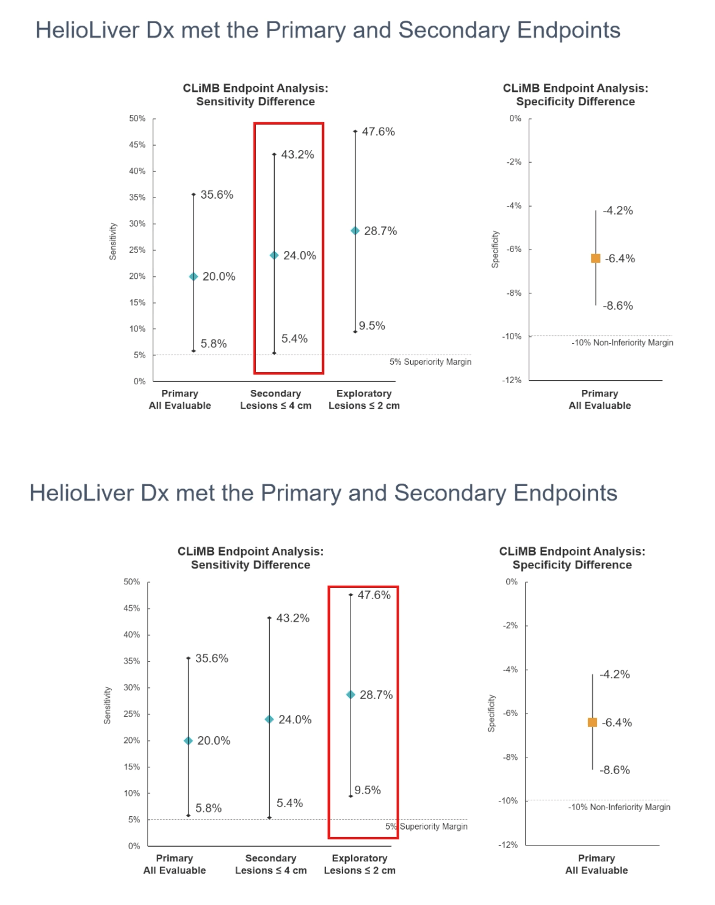
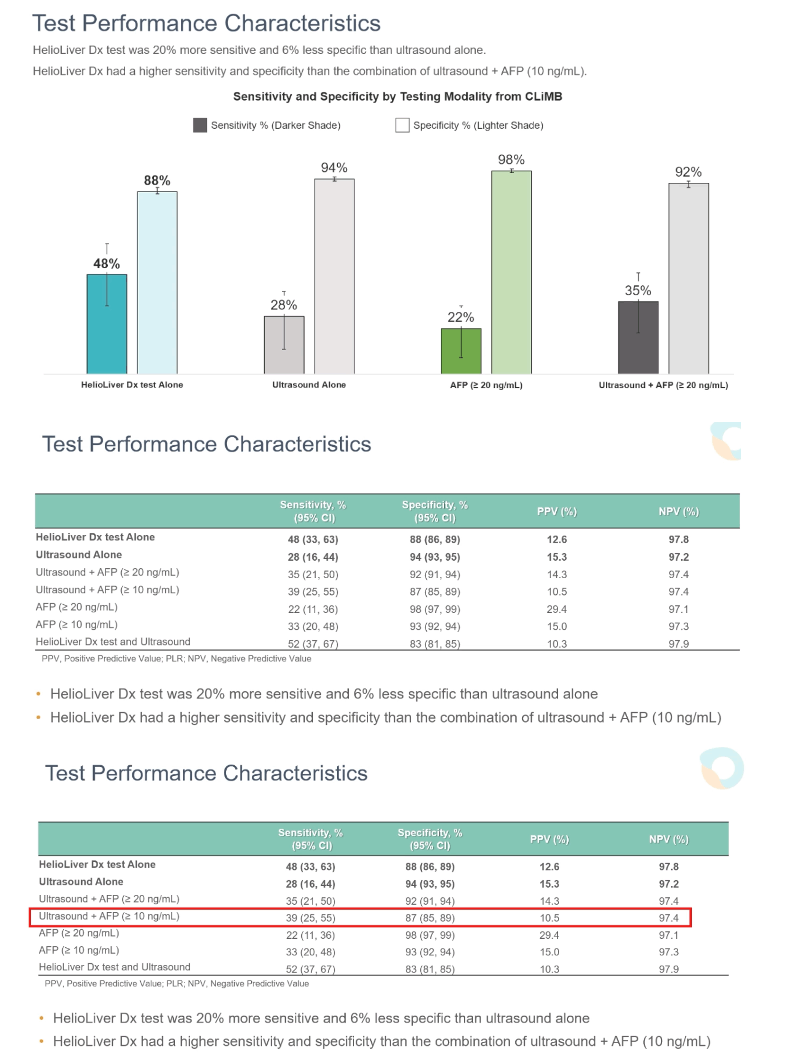
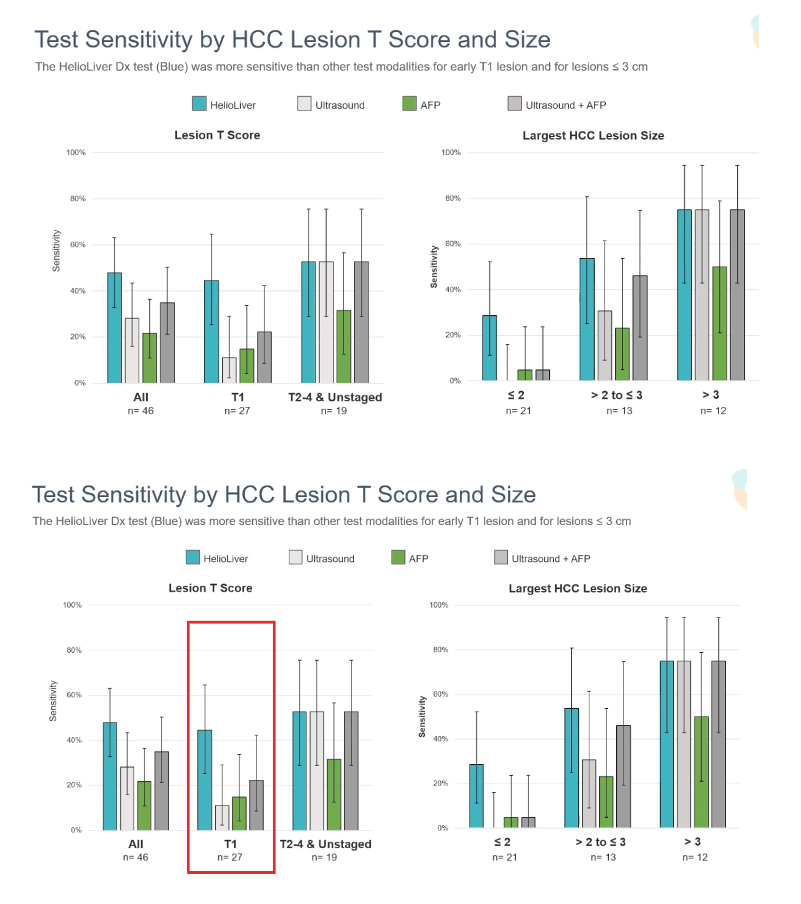
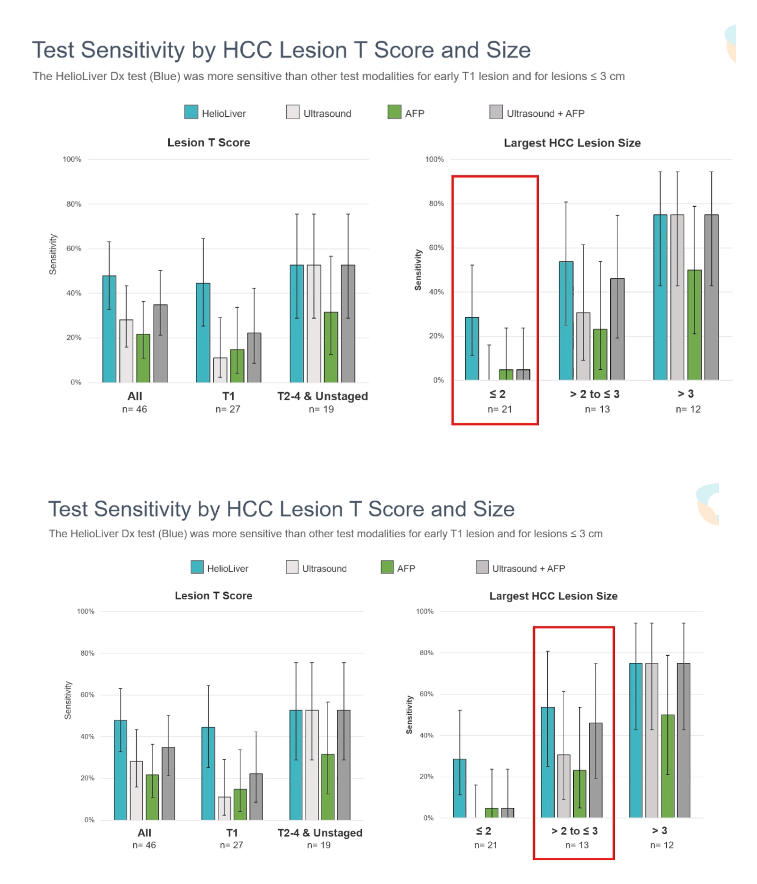
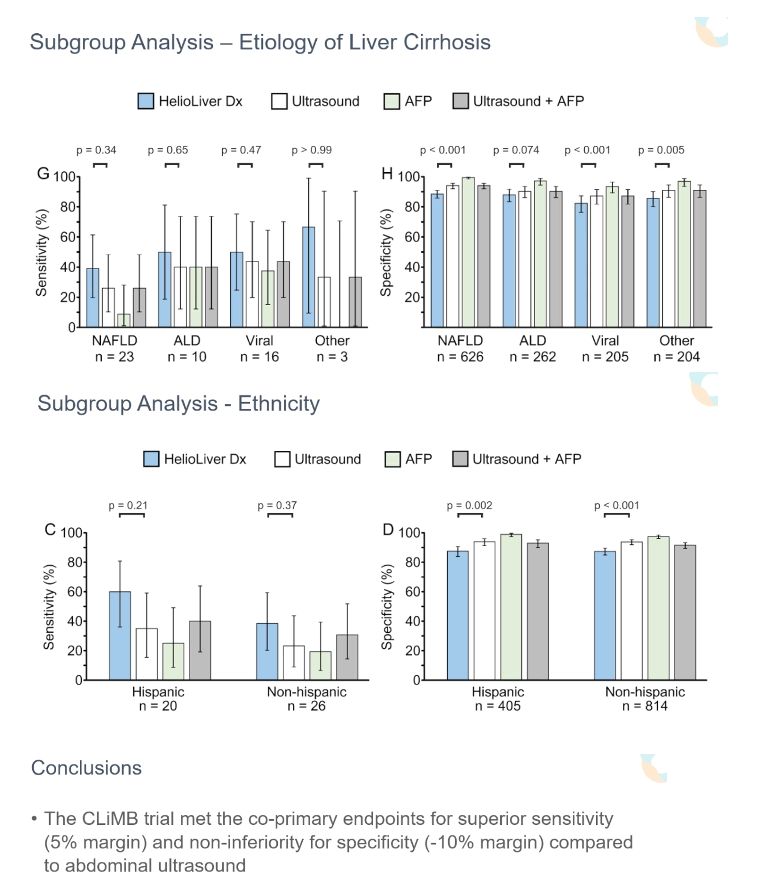

|
| |
|
 |
 |
|
|